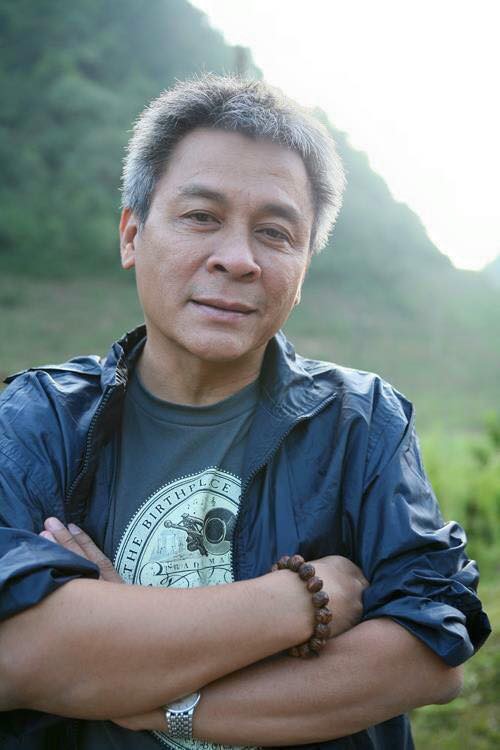 Inner Sanctum
Inner Sanctum

" />Tạ Mỹ Dương, one of the popular faces of contemporary Vietnamese architecture, has written at length on the subject. He also edited Dấu Ấn Thời Gian (The Mark of Time), a book authored by his father Tạ Mỹ Duật (1910 – 2010), a first generation architect. Dương recently had three new books published. An Vũ talks to him about the new books and his upcoming plans.
 |
| Architect Tạ Mỹ Dương |
Tạ Mỹ Dương, one of the popular faces of contemporary Vietnamese architecture, has written at length on the subject. He also edited Dấu Ấn Thời Gian (The Mark of Time), a book authored by his father Tạ Mỹ Duật (1910 – 2010), a first generation architect. Dương recently had three new books published. An Vũ talks to him about the new books and his upcoming plans.
Inner Sanctum: How long did it take you to come up with the ideas for your new books?
I had nurtured this idea for a long time. Since the content is based on existing articles and images, it did not take much time. Illustrating them took longer, about three months. I was looking for a new, creative way to design them.
Inner Sanctum: What was your idea? How do the new books differ from that of your father’s?
The first of the three books, Âm Thanh Cầu Thang Gỗ (The Sound of the Wooden Staircase), is a discussion of feelings about architecture, particularly housing designs and urban living. I share my thoughts about houses, living spaces, their spirit, the transition from tradition to modernity and other things. It is like matching architecture with literature.
Some parts of the book mention city planning, as efforts to preserve old villages around the West Lake followed some articles my father wrote about protecting Hà Nội and preserving its heritage.
The second book, Đá Hát (Rock Singing) is a kind of architectural travel story. It tells the story of my travels through Asia, Europe, Africa, America and Latin America, and what I saw and felt there, the architecture, the daily life of local residents, and so on. I have always felt a bond between the places I have been to and my homeland.
The last book, Bên Cạnh Rong Rêu (Next to the Mosses) is very different from the other two. These are short stories, including some real life ones, that are both nostalgic and an exploration of how a street, a housing block, a road shapes destinies of people from all walks of life and touches the deepest part of the soul.
Inner Sanctum: Of the three, which do you like the most? Please tell us more about why you wrote them.
I like all of them. They deal with characters, indigenousness, the hideout spirit, living spaces and the balance between urbanization and preservation.
I wrote the books to provide a general idea on what an architect is. Besides making a blueprint, he should also elucidate a concept, analyse the culture and communicate the aesthetics envisioned. The books try to present these ideas in a way that people of all backgrounds can get a simple, clear idea of what this profession means.
I also want to share my thoughts and emotions on world famous architecture, living spaces, urban landscape and heritage preservation everywhere, so that we can properly assess these things in our country.
Lastly, it is the story of the architect, a man whose work requires both technical abilities, and sensitivity to arts and culture, to human beings, to the environment, and so on. This brings architecture close to literature.
Inner Sanctum: Do you feel any pressure from having a well-known architect for a father? Have you ever been worried your father’s reputation would cast a shadow on your life?
Having a famous architect father is something I am proud of, something to be glad about, because I could learn from him, not just about the profession, but about the importance of being motivated and pursuing a career, no matter what it is, with passion. No, I never felt any pressure. The pondering sometimes comes from other aspects of life.
Inner Sanctum: What is the pondering about? Why did you decide to follow in your father’s footsteps? And what has been the biggest challenge you’ve faced?
Well, I did not choose to be an architect. It chose me instead. I just feel sad that sometimes, as the society and culture changes, the role of the architect is misjudged. They are not always allowed to be themselves, to do things they really want to.
Since đổi mới (renewal) began, economic growth has given architects more work. The most joyful part of this job is when you meet a client who shares your ideas. One encounter between me and the owner of a house, an artist, is recounted in the story Half of the House is of the Autumn in the book The Sound of the Wooden Staircase.
Inner Sanctum: How have your books been received? What next?
Feedback from friends, readers and booksellers has been good. Many people have told me they could feel the beauty, the sophistication and the romance contained in the books. They have been moved by the images of ancient houses, street corners, wooden stairways, a well and even a mute old woman selling cigarettes
I have been to 20 countries, so my future plan will perhaps be new ‘architectural voyages’. And who knows how I will be inspired by new things during these trips? Maybe new book chapters will be written. Let’s wait and see. VNS




